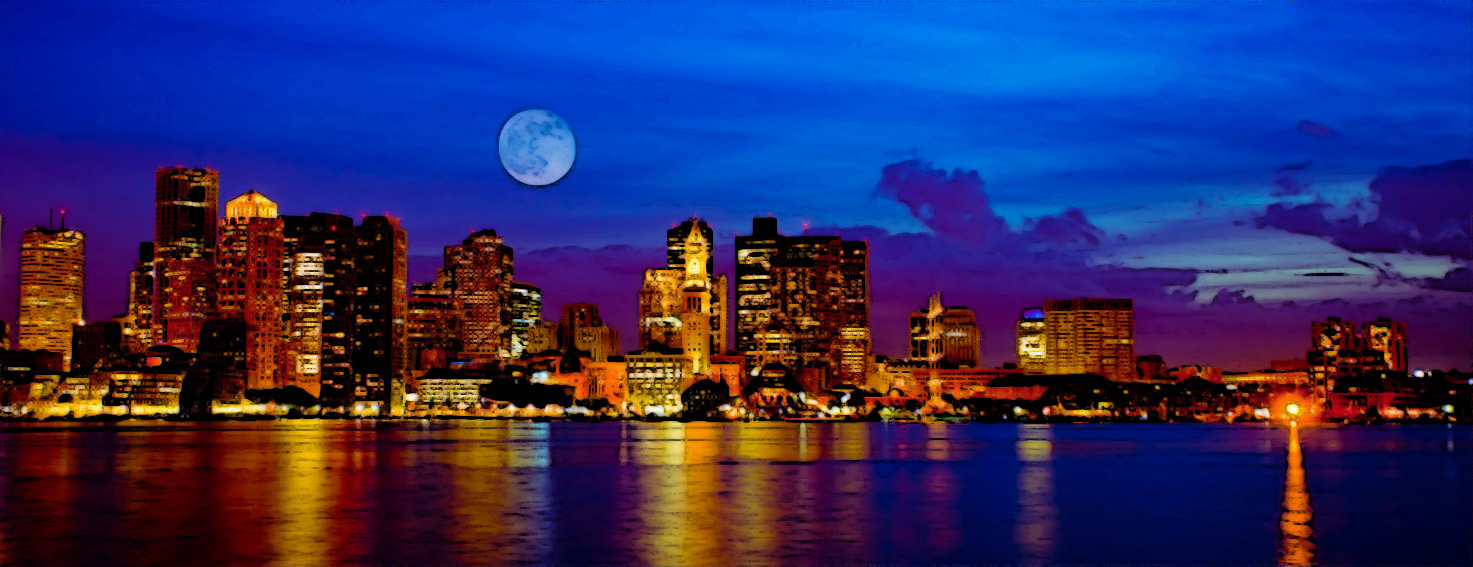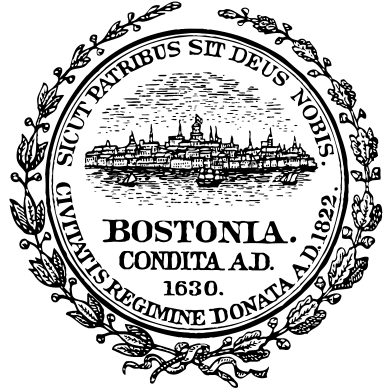Boston: Difference between revisions
| Line 199: | Line 199: | ||
---- | ---- | ||
==== [[File:Malkavian clan logo.png]] <span style="color:#800000;"> Malkavian ==== | ==== [[File:Malkavian clan logo.png]] <span style="color:#800000;"> Malkavian ==== | ||
<span style="color:#800000;"> '' | |||
===== <span style="color:#800000;"> Knights of Camelot ===== | ===== <span style="color:#800000;"> Knights of Camelot ===== | ||
* -- [[Quentin King III]] <span style="color:#800000;"> -- '''The Prince of Bonston''' | * -- [[Quentin King III]] <span style="color:#800000;"> -- '''The Prince of Bonston''' | ||
Revision as of 12:03, 2 May 2016
Quote
Appearance
City Device
City Motto
Sicut patribus sit Deus nobis (Latin) = "As God was with our fathers, so may He be with us"
Climate
Boston has a continental climate with some maritime influence, the city lies within the transition zone from a humid subtropical climate to a humid continental climate; although the suburbs north and west of the city are significantly colder in winter. Summers are typically warm to hot, rainy, and humid, while winters oscillate between periods of cold rain and snow, with cold temperatures. Spring and fall are usually mild, with varying conditions dependent on wind direction and jet stream positioning. Prevailing wind patterns that blow offshore minimize the influence of the Atlantic Ocean. The hottest month is July, with a mean temperature of 73.4 °F (23.0 °C). The coldest month is January, with a mean of 29.0 °F (−1.7 °C). Periods exceeding 90 °F (32 °C) in summer and below freezing in winter are not uncommon but rarely extended, with about 13 and 25 days per year seeing each, respectively.
Boston's coastal location on the North Atlantic moderates its temperature, but makes the city very prone to Nor'easter weather systems that can produce much snow and rain. The city averages 43.8 inches (1,110 mm) of precipitation a year, with 43.8 inches (111 cm) of snowfall per season. Snowfall increases dramatically as one goes inland away from the city (especially north and west of the city)—away from the moderating influence of the ocean. Most snowfall occurs from December through March, as most years see no measurable snow in April and November, and snow is rare in May and October. There is also high year-to-year variability in snowfall; for instance, the winter of 2011–12 saw only 9.3 in (23.6 cm) of accumulating snow, but the previous winter, the corresponding figure was 81.0 in (2.06 m).
Fog is fairly common, particularly in spring and early summer, and the occasional tropical storm or hurricane can threaten the region, especially in late summer and early autumn. Due to its situation along the North Atlantic, the city often receives sea breezes, especially in the late spring, when water temperatures are still quite cold and temperatures at the coast can be more than 20 °F (11 °C) colder than a few miles inland, sometimes dropping by that amount near midday. Thunderstorms occur from May to September, that are occasionally severe with large hail, damaging winds and heavy downpours. Although downtown Boston has never been struck by a violent tornado, the city itself has experienced many tornado warnings. Damaging storms are more common to areas north, west, and northwest of the city. Boston has a relatively sunny climate for a coastal city at its latitude, averaging over 2,600 hours of sunshine per annum.
Economy
History
Location
Population
- -- City (1,149,197) - 2042 census
- -- Urban (6,177,269) - 2042 census
- -- Metro Area (6,283,254) - 2042 census
- -- CSA (10,215,190) - 2042 census
Arenas
Attractions
Bars and Clubs
- -- Denmark's -- A nightclub and Kindred watering-hole in Roxbury.
Castles
Cemeteries
City Government
Churches
- -- Old South Church -- Old South Church in Boston, (also known as New Old South Church or Third Church) is a historic United Church of Christ congregation first organized in 1669. {Copley Square}
- -- Trinity Church of Boston -- {Copley Square}
Crime
Citizens of the City
Current Events
Galleries
Hospitals
Hotels & Hostels
- -- The Fairmont Copley Plaza Hotel -- Current residence of a coterie of Kindred new to Boston.
Hypermarkets
Landmarks
- -- Copley Square -- Copley Square, named for painter John Singleton Copley, is a public square in Boston's Back Bay neighborhood, bounded by Boylston Street, Clarendon Street, St. James Avenue, and Dartmouth Street.
Monasteries
Monuments
Museums
Neighborhoods
A History of Boston's Neighborhoods
As the city of Boston has grown and evolved, its neighborhoods have changed as well. The names of the West End, North End, and South End refer to their positions on the Shawmut Peninsula, the original extent of Boston. Due to the annexation of surrounding communities, those neighborhoods are no longer at those geographic extremities. The Back Bay and Bay Village neighborhoods were formerly part of an actual bay, becoming the neighborhoods they are today after landfill projects expanded the size of the city. Brighton (including Allston), Charlestown, Dorchester (including South Boston, Mid Dorchester, Mattapan, and Hyde Park), Roxbury (including West Roxbury, Roslindale and Jamaica Plain), have all at some point been municipalities independent from downtown Boston, providing a source of well-defined boundaries for the largest areas.
A Geographic Overview
Downtown Boston includes Downtown Crossing, the Financial District, and Government Center.
Surrounding downtown are the neighborhoods of Chinatown/Leather District, South End, North End, West End, Bay Village, Beacon Hill, and Back Bay. Chinatown/Leather District is the historical garment district and today has thriving Chinese and other Asian populations. The South End is the center of the city's LGBT population and also populated by artists and young professionals as well as a vibrant African American community. The North End retains an Italian flavor with its many Italian restaurants, though many of its Italian families have moved out, while young professionals have moved in. The Back Bay, west of the Public Garden and Beacon Hill, a wealthy neighborhood, is the site of the Massachusetts State House. The Back Bay and Beacon Hill are also home to national and local politicians, famous authors, and top business leaders and professionals. Bay Village is one of the smallest neighborhoods in Boston and mostly contains Greek Revival-style row houses.
North and east of downtown are the neighborhoods of East Boston and Charlestown. East Boston has a majority of Hispanic and Brazilian population with a remnant of older Italians. On the north bank of the Charles River is Charlestown; once a predominantly Irish enclave and site of the Bunker Hill Monument, it is now a haven for young professionals.
West of downtown are the neighborhoods of Fenway Kenmore, Allston, Brighton and Mission Hill. Fenway Kenmore borders the campus of Boston University and houses many college students and young professionals and is the location of Fenway Park. Allston and Brighton are populated heavily by students from nearby universities, as well as recent graduates. Mission Hill is adjacent to the Longwood Medical district, full of world-class medical institutions and retains an extremely diverse mix of African Americans, Asian Americans, whites and Latinos.
South of downtown are the neighborhoods of Roxbury, Jamaica Plain, Dorchester, Mid Dorchester, and South Boston. Dorchester, including Mid Dorchester, is Boston's largest neighborhood and predominantly a working class community considered to be Boston's most diverse. Roxbury is populated largely by African Americans, Caribbean Americans, and Latinos and is historically the center of Boston's black community. Jamaica Plain is a community of white professionals and Latinos, and includes the larger side of the Arnold Arboretum. South Boston is a predominantly Irish-American neighborhood, which hosts the city's annual St. Patrick's Day parade.
South of Roxbury, Jamaica Plain, and Dorchester are the neighborhoods of Mattapan, Roslindale, Hyde Park, and West Roxbury. Roslindale is known for its small business district and includes the smaller side of the Arnold Arboretum, Roslindale has also recently become a Majority minority neighborhood. Mattapan remains the neighborhood with Boston's highest concentrations of African Americans. Hyde Park and West Roxbury have a distinct suburban feel, while still being a part of the city of Boston. Both neighborhoods have large areas of wooded parks and recreation land. Hyde Park is populated largely by African Americans and Caribbean Americans, whereas West Roxbury is predominantly white with rapidly growing African American and Latino populations.

A List of Places and Squares within Neighborhood Areas
Boston's diverse neighborhoods serve as a political and cultural organizing mechanism. The City of Boston's Office of Neighborhood Services has designated 23 Neighborhoods in the city.
The 23 official neighborhoods in Boston are made up of approximately 84 sub-districts, squares, and neighborhoods within each official neighborhood.The Boston Redevelopment Authority defines 16 planning districts (plus the Boston Harbor Islands) and 64 Neighborhood Statistical Areas (with four areas further subdivided). These correspond roughly with the neighborhoods and sub-neighborhoods of Boston. Unofficially, Boston is made up of approximately 105 neighborhoods.
- -- Allston
- -- Back Bay
- -- Bay Village
- -- Beacon Hill
- -- Brighton
- -- Charlestown
- -- Chinatown/Leather District
- -- Dorchester
- -- Downtown Boston
- -- East Boston
- -- Fenway Kenmore
- -- Hyde Park in Boston
- -- Jamaica Plain
- -- Mattapan
- -- Mission Hill
- -- North End
- -- Roslindale
- -- Roxbury
- -- South Boston
- -- South End
- -- West End
- -- West Roxbury
The islands in Boston Harbor are administered as part of the Boston Harbor Islands National Recreation Area.
The Boston Redevelopment Authority, the City Parking Clerk, and the City's Department of Neighborhood Development have also designated their own neighborhoods. Unofficially, Boston has many overlapping neighborhoods of various sizes. Neighborhood associations have formed around smaller communities or commercial districts (often with "Square" in the name) that have a well-defined center but poorly identified extremities.
Parks
Private Residences
Restaurants
Ruins
Schools
Shops
Theatres
Transportation
Vampires of the City
In most ways, Boston is the ideal Camarilla city. Its prince, Quentin King III has ruled unchallenged for over 200 years. He is supported by a strong brood of childer who also serve as his enforcers and private security while overseeing portions of Boston for their sire and liege. Likewise the Primogen of Boston have all lived in the city for at least a century and all are true elders. To the minds of newcomers then, it is something of a surprise to discover that the Kindred court of Boston strongly supports its prince and works together to keep the city stable and peaceful. While this would be an achievement in nearly any New World domain, it is more so in Boston for the fact that Quintin King is a Malkavian and many of his clan members reside in or regularly visit the city. This is not to say that Boston is without its problems, for the growing influence of the Giovanni Clan of vampires in Boston places ever more pressure on the seemingly stable brow of the city's mad prince. Worse, the Sabbat has long coveted Boston and has worked for almost two centuries to destabilize the city long enough to topple the current regime and replace it with one of their own.
Camarilla Officers
The Prince of the City
The Seneschal
Scourge & Sheriff
Unlike many Camarilla domains, Boston has neither a sheriff, nor a scourge, instead each of its domains are policed by one or more individual groups. The Six Knights are first among these groups, but rather as individuals they look after their respective districts acting in multiple capacities as the local judge, jury and sometimes executioner. Overlapping the hegemony of the Six Knights are the local Kindred residents who hold domain over a given region, an excellent example would be Pug Jackson who holds dominion over the neighborhood of Roxbury and enforces his control through his vampiric posse and the numerous mortal gangs over which he has influence. Underlying these two competing and often overlapping feudal bailiwicks are the presence of the British forces, colloquially referred to as "Redcoats," who patrol the streets and neighborhoods much as a local scourge would do in a "normal" Camarilla enclave. This decentralized medieval patchwork of domains, the overlap of competing Kindred authority figures, and the often broken lines of communication often spark unnecessary violence that fosters a profound miasma of insecurity in the minds of Boston's resident undead.
The Primogen Council
Despite the departure of the Gangrel from the Camarilla in 1999, the defection of the Brujah a few years later, and most recently Clan Tremere's dissolution of alliance with the Camarilla, Boston's council of primogen remains intact as it has since before the 20th century. All its members have reaffirmed their allegiance to Camarilla and fully support the decisions of their rightful prince. Their outward appearance of camaraderie has been pivotal in maintaining the illusion of stability and security that holds Boston's Kindred community together on a night-to-night basis. Most of the primogen are active in the affairs of their clan members through the auspices of their chosen whips who work hard ensuring that everyone tows the party line. Of course, this pleasant illusion masks the reality of infighting and backbiting that characterize the toxic politics of Boston's Kindred elite. Despite their projected image as a wizened quorum of elders guiding a enlightened monarch in the nightly rule of an urban paradise, the primogen of Boston often epitomize the civilized savagery of Elysium where centuries old grudges are nursed to poisonous fruition by nightly bouts of seemingly intellectual debate masking cleverly concealed emotional barbs, invectives and backhanded insults.
- -- Pug Jackson -- {Brujah}
- -- Battista Decamerone -- {Gangrel}
- -- William Biltmore -- {Malkavian}
- -- Benjamin Rathe -- {Nosferatu}
- -- Elsa Linden -- {Toreador}
- -- John Reiss -- {Tremere}
- -- Upton Rowlands -- {Ventrue}
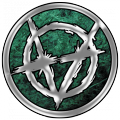 Brujah
Brujah
All the Brujah in Boston are the "Get" of Pug Jackson. While Pug has created several other childer, many of those have been destroyed over the years.
- -- Pug Jackson -- Primogen.
- -- Seneca Jackson -- Father Figure to the Rabble of Boston.
- -- Diana Jackson -- Pug's wife.
- -- Lucius Jackson -- Pug & Diana's son.
Pug's Gangmembers
- -- Richmond Jones -- A 1920s Black Gangster & Pug's Right-hand-man.
- -- Hansom Haines -- A W.W.II Black Marine.
- -- Augustus Smith -- 1950s Civil Rights Activist.
- -- Sable Quint -- The - Black - Panther.
- -- Dionysus Lowe -- 1970s Drug Dealer & Pimp.
- -- Louis Farrier -- Veteran of the Iraqi War.
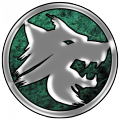 Gangrel
Gangrel
- -- Battista Decamerone -- The Beast of the Western Woods
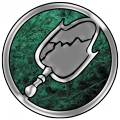 Malkavian
Malkavian
Knights of Camelot
- -- Quentin King III -- The Prince of Bonston
- -- The Six Knights -- The Prince's Bodyguard.
The Moirai
- -- Emmanuel Moncrief --
- -- Faye Sharpless --
- -- Elizabeth Ann Morrow --
- -- Jack Sprat --
- -- Eduardo Antenio Garcia --
The Loner
- -- Miss Keto --
Other Kooks
- -- Candida Shaw --
- -- Walton Morrison --
- -- Posy Ward --
- -- Devyn Yap --
- -- Madlyn Bone --
- -- Isador Martell --
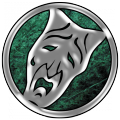 Nosferatu
Nosferatu
- -- Benjamin Rathe -- Nosferatu Elder
- -- Jara Drory -- Mistress of the Sewers
- -- Riagán Mahoney -- Street Urchin & Pickpocket
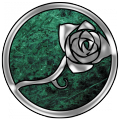 Toreador
Toreador
Boston Artistes
- -- Elsa Linden -- Toreador Musician
- -- Beckett Summers -- 19th Century singing master
- -- Tamsin Summers -- Opera Prima Donna
- -- Cecily Thornton -- The Blind Violinist
- -- Hecate Jones -- Grunge girl Goth
Local Poseurs
- -- Sinjin Hackett -- The Shanty Man
- -- Rodney Rennell -- Jazz Club owner
- -- Delma Southers -- New England Folk artist
- -- Augusta Nowell -- Promoter extraordinaire
 Tremere
Tremere
- -- John Reiss -- Tremere Regent
 Ventrue
Ventrue
- -- Upton Rowlands --
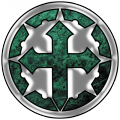 Ravnos
Ravnos
- -- Viola Vivas -- The last gypsy in New England.
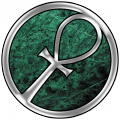 Caitiff
Caitiff
- -- Effie Feng --
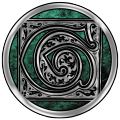 Giovanni
Giovanni
Those of a Single Blood
Ranking Elders
- -- Andreas Giovanni -- Capo Di Tutti Capi
- -- Stephano Giovanni -- Councilor and Sergeant.
- -- Prospero Giovanni -- Giovanni outcast and former Elder of Seattle
Ancilla
- -- Osanna Accosi -- First Progeny of Prospero and Apple of his Eye.
- -- Rosa Stilo -- Second Progeny of Prospero and the obvious regret of Prospero.
- -- Luca Baraggia -- Third progeny of Prospero and familial Body-guard to the coterie of Prospero's Giovanni.
- -- Domenic Giovanni
Neonates & Fledglings
- -- Primo Giovanni -- Progeny of Isobel Giovanni, neonate, and necromantic prodigy.
- -- Kay Polerno -- Progeny of Accorri Giovanni, neonate, and student-athlete.
- -- Urbano Accosi -- Former House Steward and longtime ghoul of Prospero Giovanni.
The Double Bloods of Boaton
The Milliner Client Family -- The American Double Bloods
- -- Jason Milliner -- Nephew of Francis and business mogul turned necromantic prodigy.
- -- Stewart Milliner
- -- Lawrence Milliner
The Rosselini
- -- Ophelia Rosselini -- Progeny of Genevra Giovanni
The Rothstein Client Family -- The Jewish American Double Bloods
- -- Niv Rothstein -- {Currently in Torpor in the Boston Giovanni-Milner Mansion}
The Putanesca Client Family -- The First Client Family and Sicilian Slave Labor
- -- Lucciano Putanesca -- The Dog’s Body
Deceased Giovanni
The Sabbat of Boston
- Bedlam -- A Young Nomadic Pack
The Wraith Slaves of the Boston Giovanni
